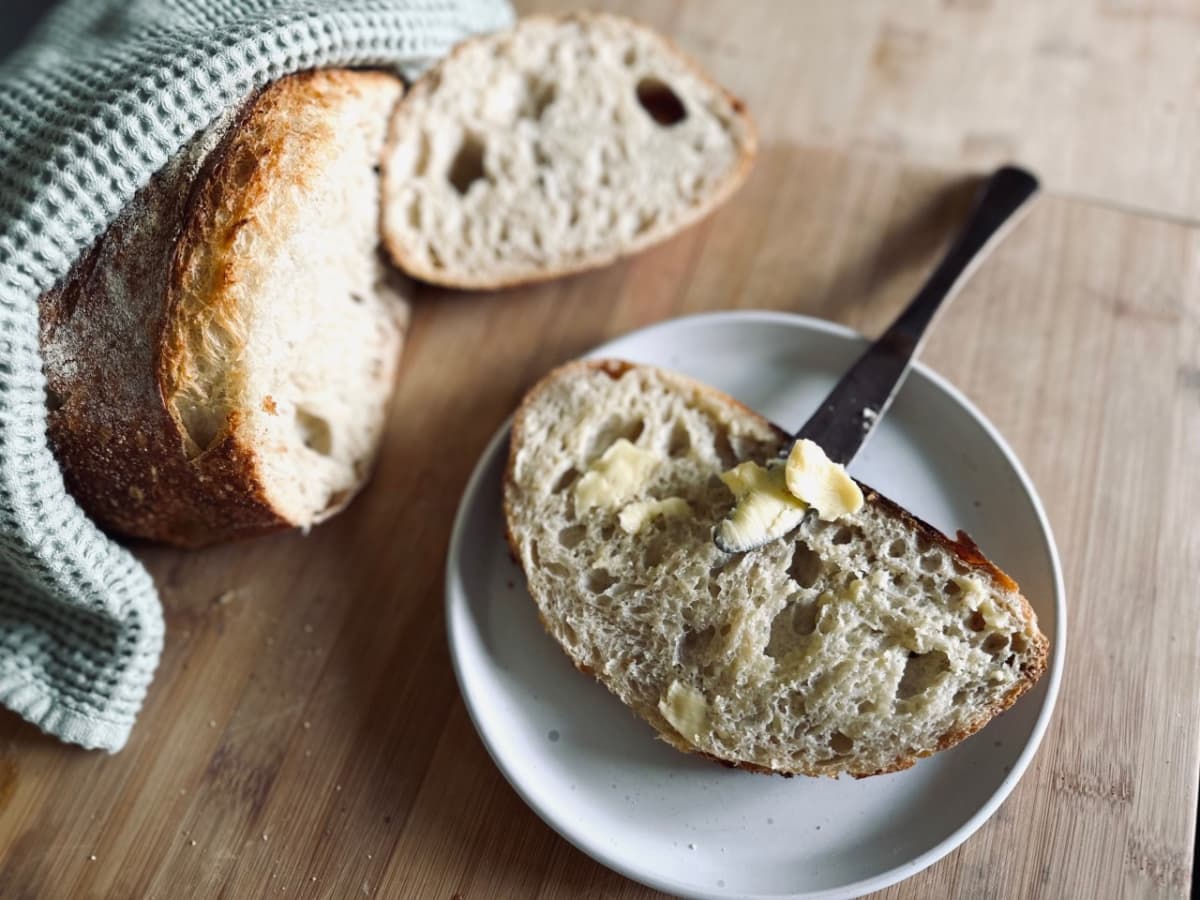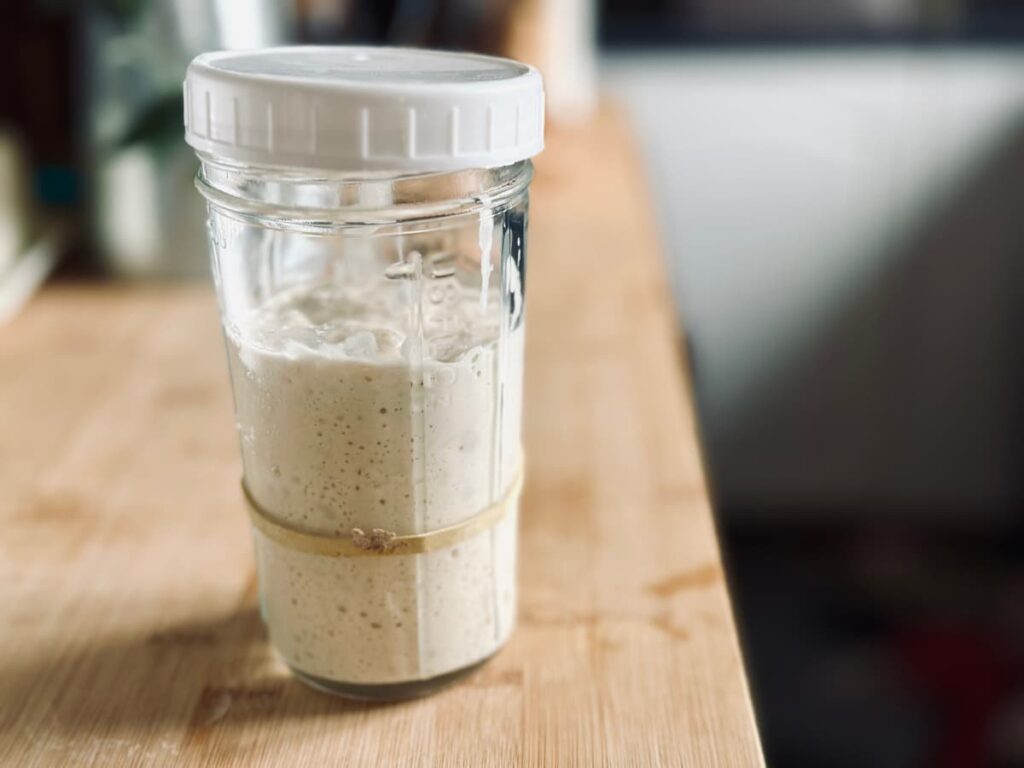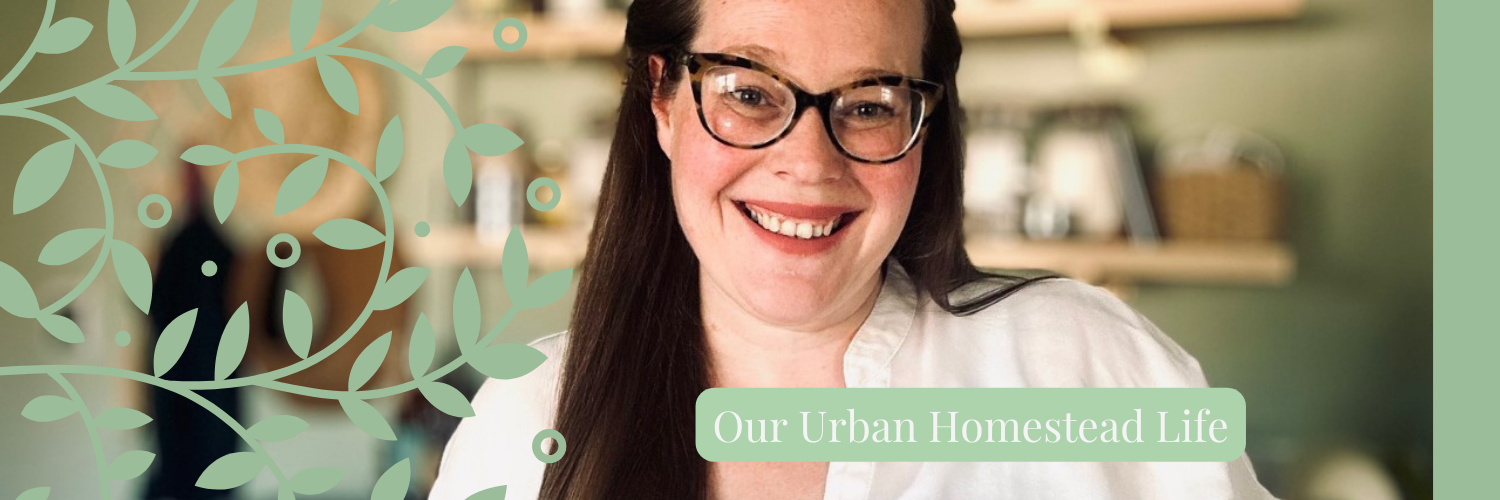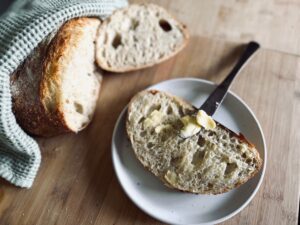Sourdough baking became all the rage during the last 3 years but what is it, and why have people gone mad over it? We’ll take a look at these questions in our new series, Sourdough: The Basics.

Banana bread, Tiger King, and Sourdough Bread.
What have these 3 things got in common?
Well, If you lived in the UK during the pandemic, you will know that this was the rite of passage during Lockdown.
Everyone had a go at all of these things and they went VIRAL!!
However, for most people, all of that fell by the wayside again as life began to get back to some sense of normality.
Not so for us.
While I’m not keen on banana bread, and Tiger King lost it’s initial shock value, sourdough is the one thing we kept out of the three.
It’s delicious flavour and complex health benefits have lead it to be a staple in our home. But why all the fuss? Lets take a look.
What is Sourdough, anyway?
The term sourdough actually refers to the process of long fermentation that the flour undergoes.
Instead of using baker’s yeast, we capture and cultivate the wild yeast that is all around us. This yeast is on the wheat itself, in the air, even on the baker’s hands. This yeast then leavens the bread or bread product in much the same way a normal bread is baked. Sourdough has a distinct taste and texture than is not found in regular bread.
Where did it originate?
In the Encyclopedia of Food Microbiology, Michael Gaenzle writes: “One of the oldest sourdough breads dates from 3700 BCE and was excavated in Switzerland, but the origin of sourdough fermentation likely relates to the origin of agriculture in the Fertile Crescent and Egypt several thousand years earlier”
Bakers yeast, which is the most common yeast for home baking nowadays, didn’t appear until the 19th century. Before this, this age old method was passed down through generations as how we make bread, and keep it from spoiling.
How does Sourdough Work?
We give these microscopic bacteria and yeast the environment they require, (warmth, food-simple starches and glucose in the flour, water, and oxygen) and in turn, the yeast and bacteria (Lactobacillus) multiply and produce lactic acid, giving the sour taste, and give off gases that cause the bread product to rise. That lift creates the soft, airy texture that you see on the inside of sourdough.
Unlike baker’s yeast, this process can take 12-24 hrs, so this is called long fermentation.
During this process, the microorganisms essentially start to digest the sugars in the flour, releasing some of the nutrients into a more bioavailable form so our bodies can use them more efficiently. This helps to lower the glycaemic index of sourdough bread compared to other fast fermented bread, and leads to easier digestion.
The Sourdough Starter
The microorganisms are usually cultivated in a starter, a main pot of leavening agent. This is made using flour and water vigorously mixed to incorporate oxygen and left to multiply. Once established, part of the starter is then used at it’s peak to leaven the bread or bread product, and the starter is refreshed and the process starts again.
Many people use the discard and feed method, to keep the amount of starter manageable, and this can be used for lots of yummy treats and snacks itself. See here to learn more about Sourdough Discard and it’s many uses!
Sourdough Starters are widely available online, but they are also very easy to make from scratch. Click here to see how

The Return to the Old Ways
With so many modern conveniences, we may think that new is better. New ways are inherently better than old ways, because they’re new.
But across the world, we see a shift back to the old ways. The old ways that turn out to be tried and tested. That are more nourishing, and better for us than the processed, chemical laden food-like substances that the ‘new’ brings us.
Our great great grandmothers didn’t know it was called lactobacilli or that it was a stable symbiotic relationship where each organism creates the perfect environment for the other.
They just knew the bread rose and long fermenting overnight meant it kept longer and didn’t spoil as quick.
Modern science and technology has proved what they knew from observation. It’s given us the how. But they knew the why. Because it’s good for you, it tastes good, and it keeps better.
If you want to know more about the benefits, check this post on the 7 Benefits of Sourdough
What would you like to learn in this sourdough basics series? Let me know in the comments below. Thanks friend x
Other Posts you may like:


1 thought on “What is Sourdough – Sourdough: The Basics”